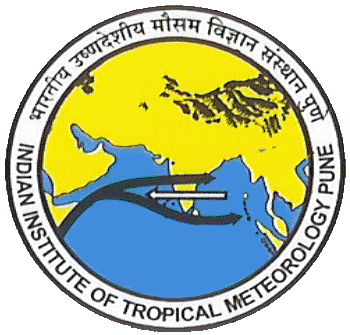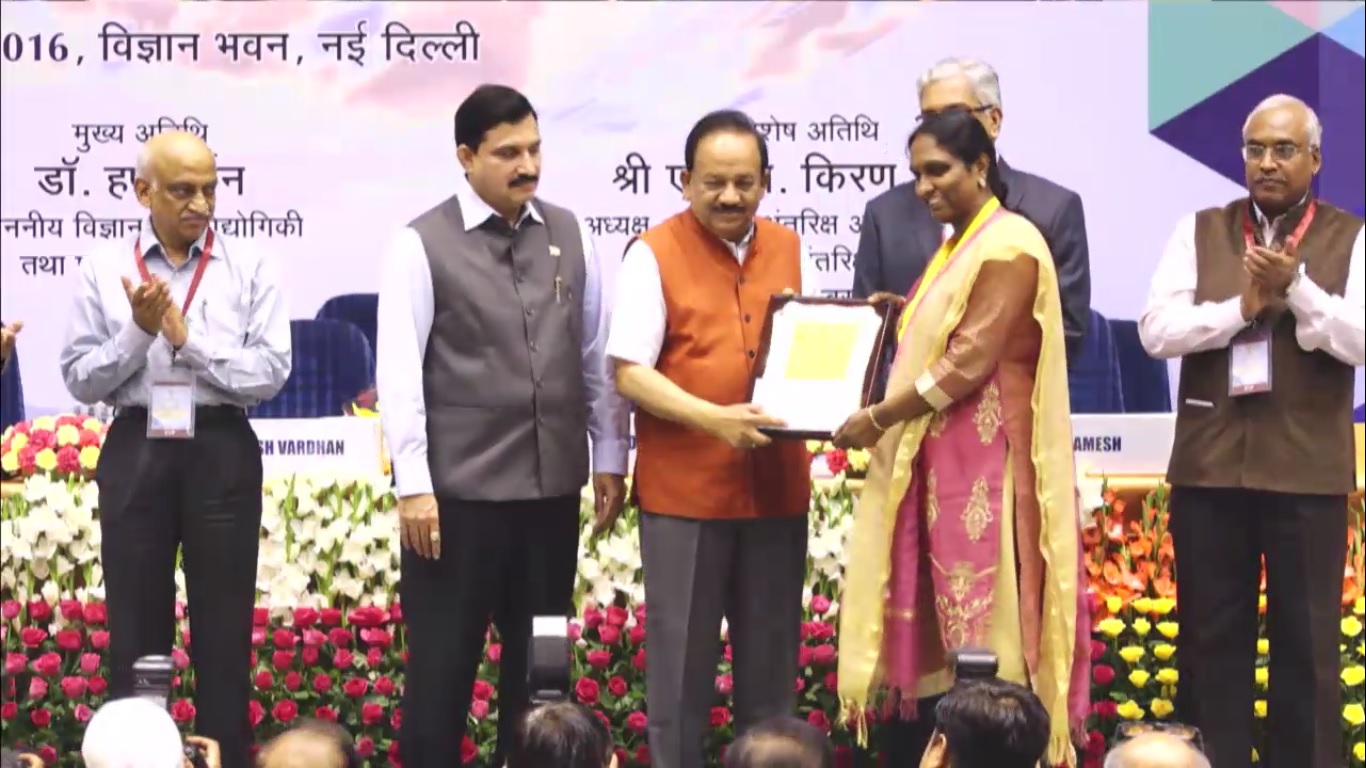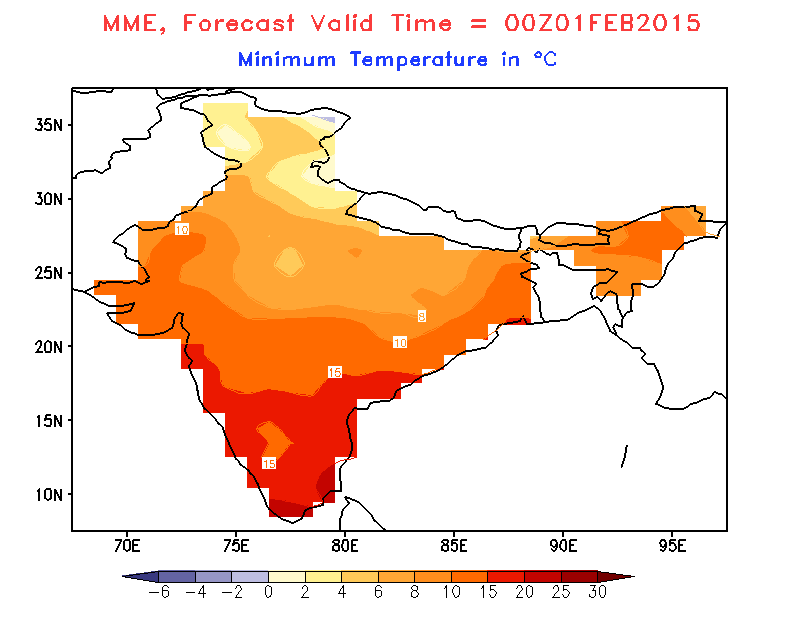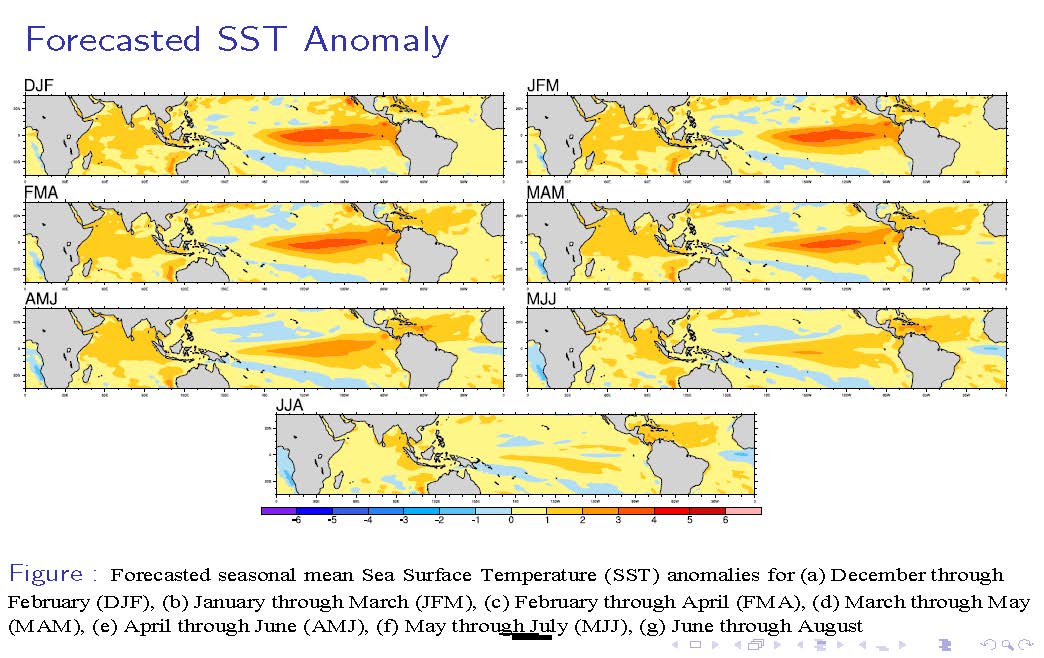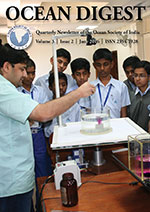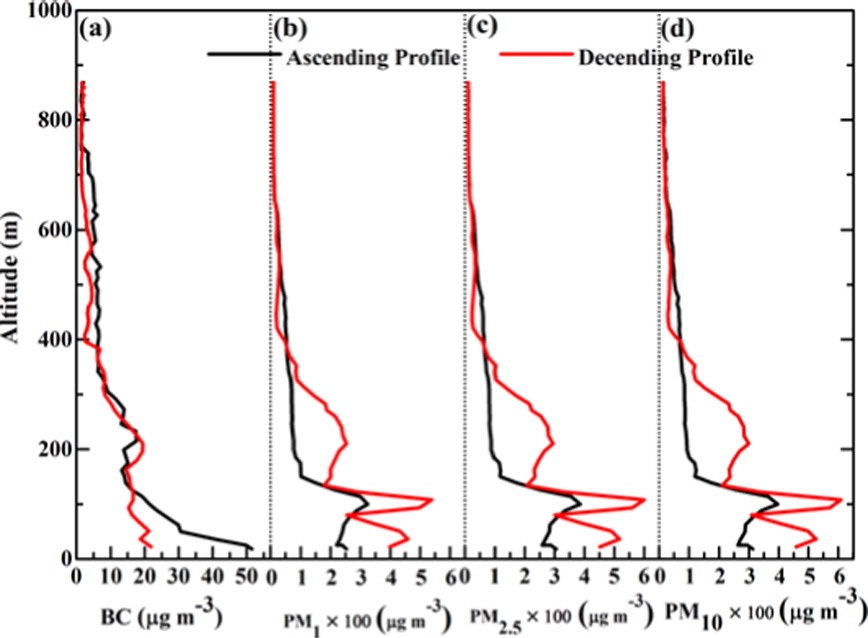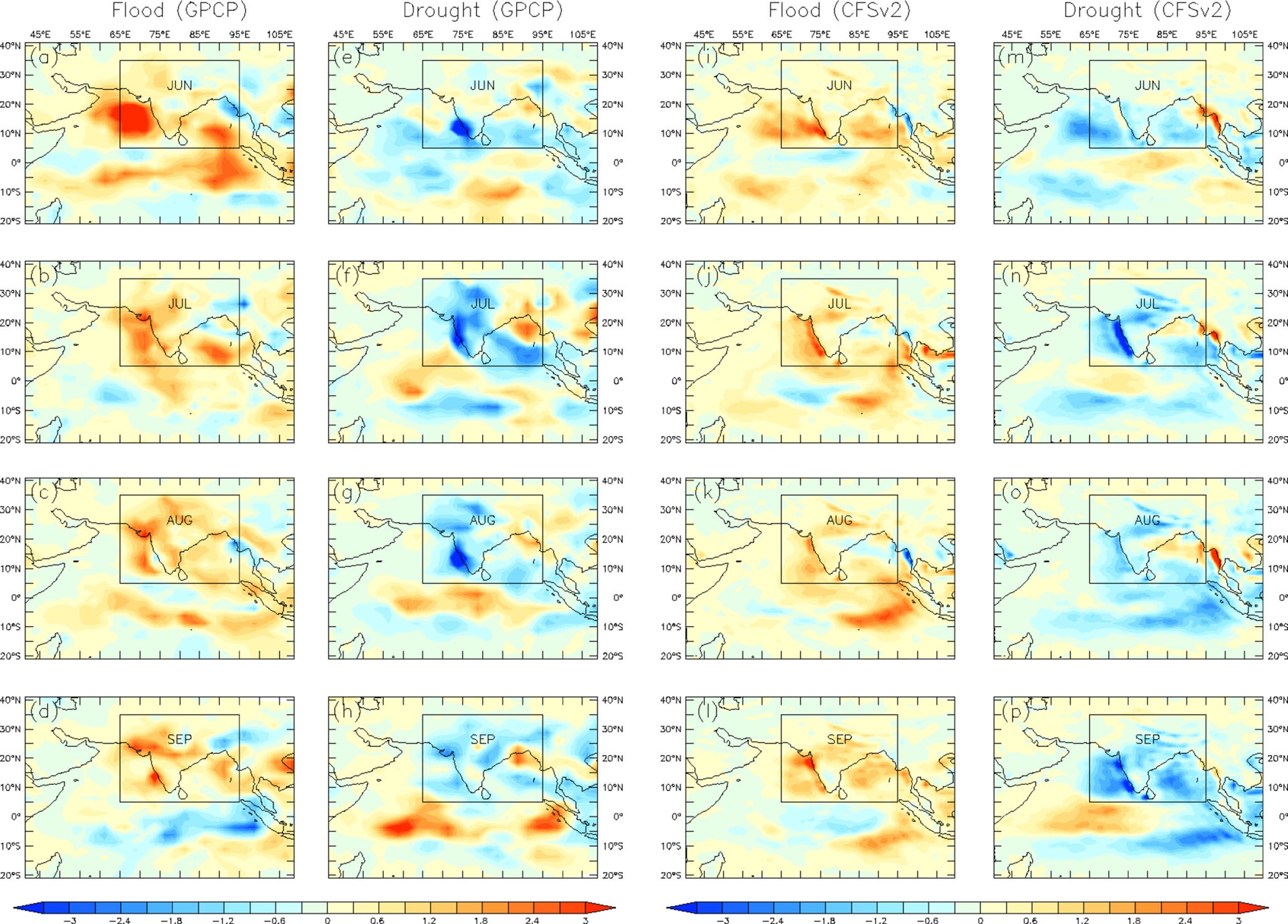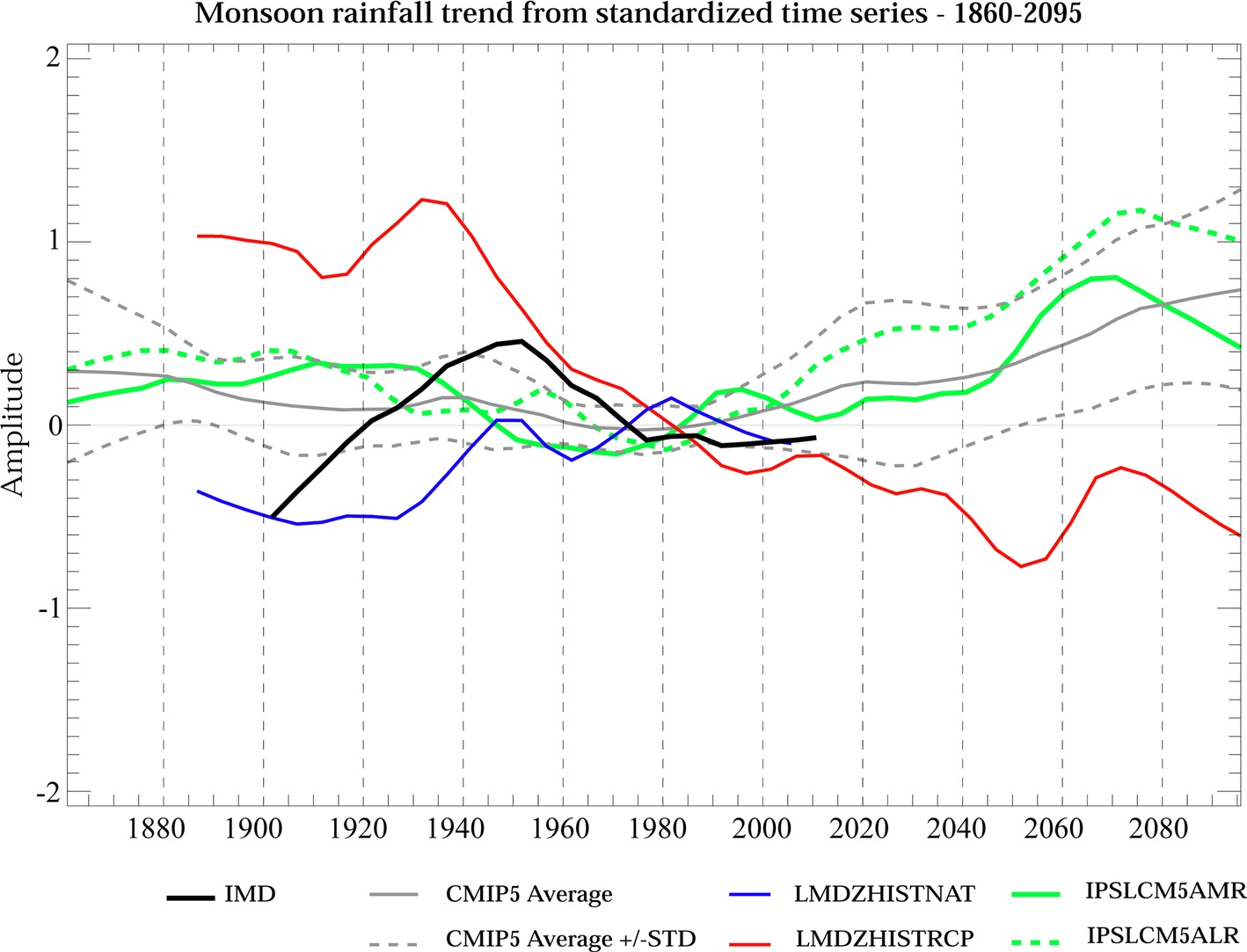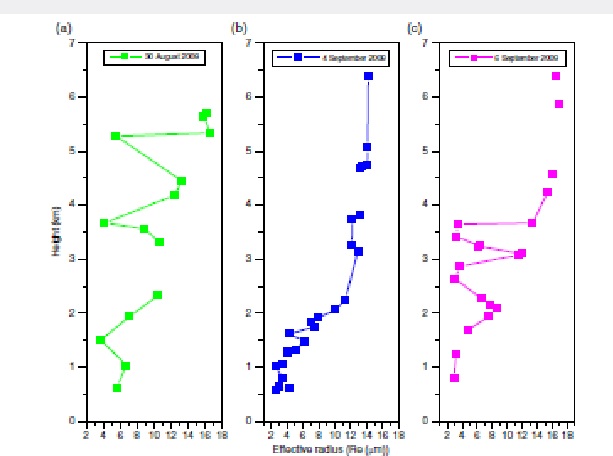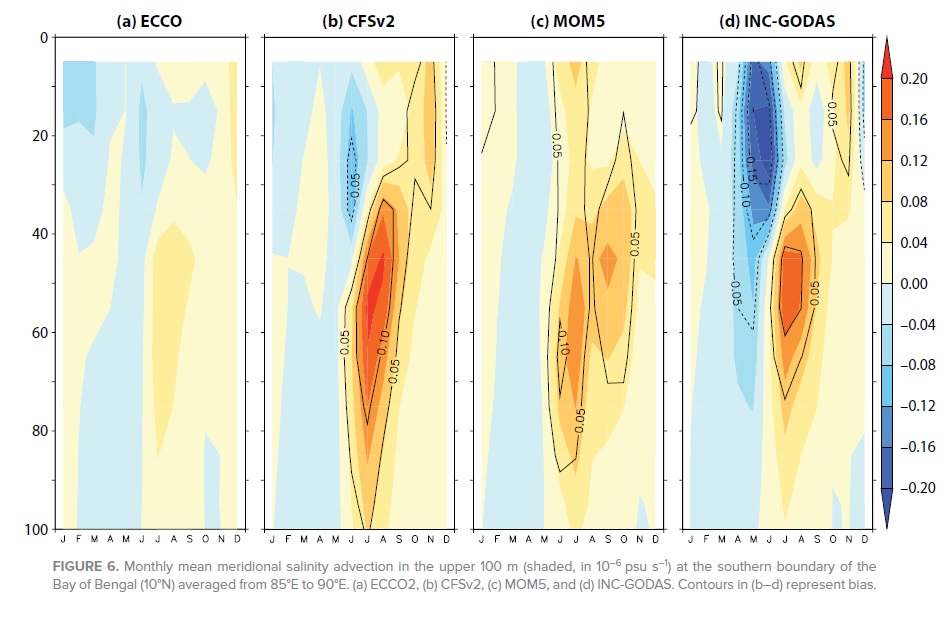IITM Publication Highlights
Long term temperature trends at major, medium, small cities and hill stations in India during the period 1901-2013
|
In the present study, seasonal and annual mean, maximum and minimum temperature data of 36 stations for the period 1901-2013 have been used. These stations are classified into 4 groups, namely major, medium, small cities and hill stations. During the period 1901-1970, less than 50 % stations from each group showed a significant increasing trend in annual mean temperature, whereas in the recent period 1971-2013, more than 80 % stations from all the groups except small city group showed a significant increasing trend. The minimum temperature increased faster than that of the maximum temperature over major and medium cities, while maximum temperature increased faster than the minimum temperature over the small cities and hill stations.
Read more...
(D. R. Kothawale, N. R. Deshpande and Rupa Kumar Kolli, American Journal of Climate Change, 5, Sept. 2016) |
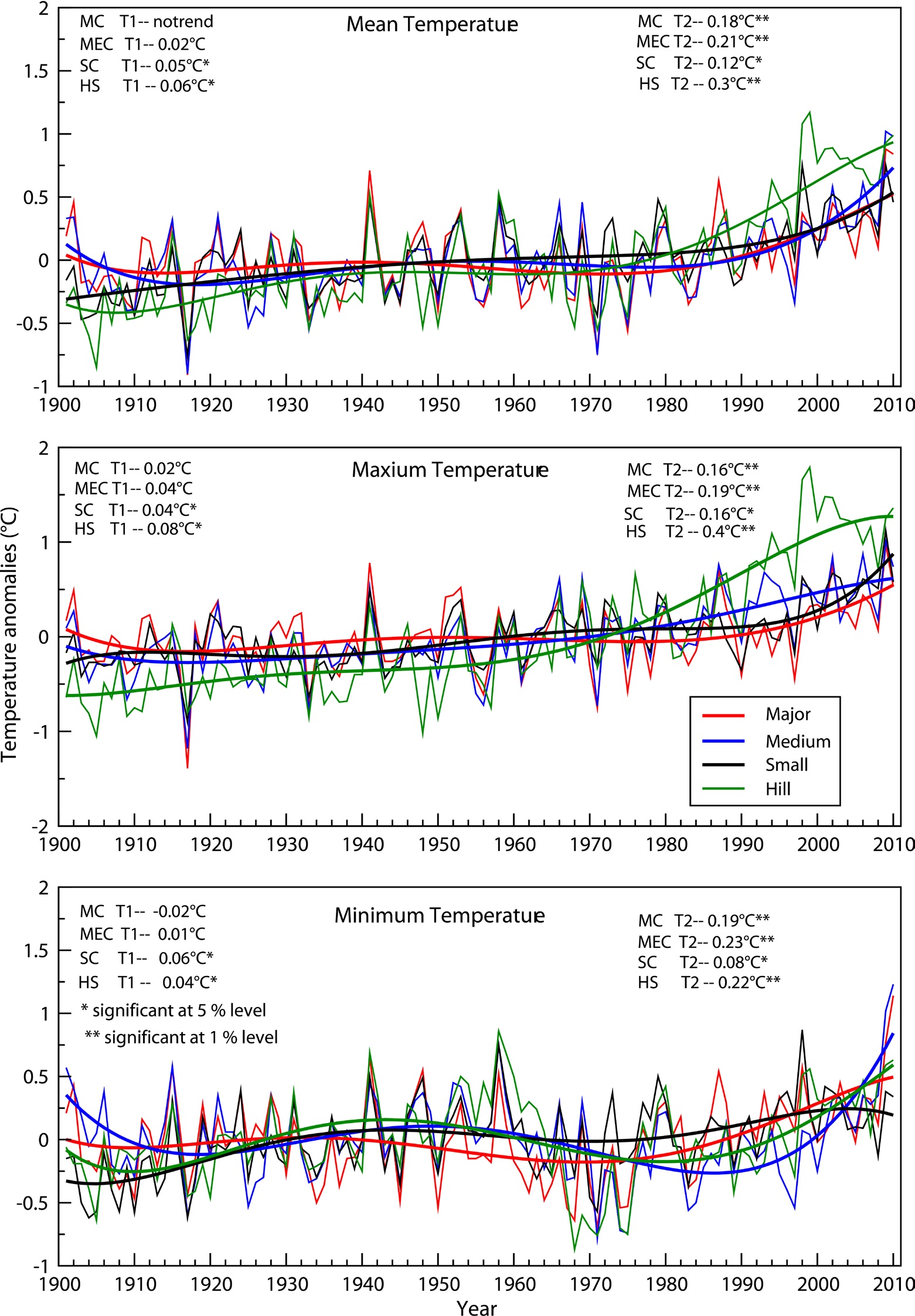 |
Observations of monsoon convective cloud microphysics over India and role of entrainment-mixing
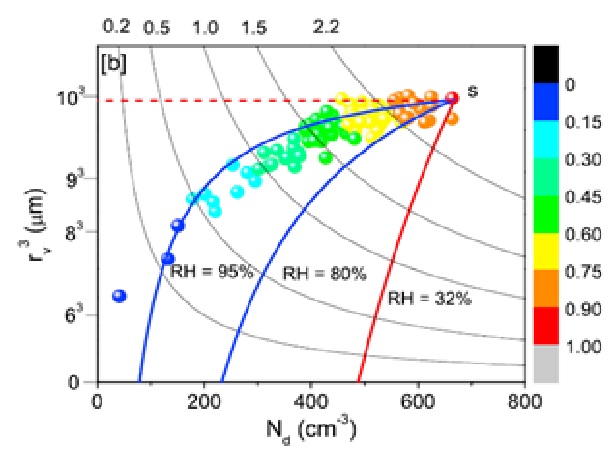 |
Microphysical characteristics of premonsoon and monsoon deep cumuli over India are contrasted focusing on influences of environmental thermodunamics and entrainment-mixing processes. Differences in the lower tropospheric temperature and moisture profiles lead to contrasting undiluted cloud buoyancy profiles around the cloud base. The conserved-variable thermodynamic diagram suggests that entrained parcels originate from levels close to the observational level. Mixing processes and their impact on the droplet size distribution (DSD) are investigated contrasting 1 Hz and 10 Hz observations.
Read more...
(Bera, S., T. V. Prabha, and W. W. Grabowski, Journal of Geophysical Research- Atmosphere, August, 2016) |
Investigation of aerosol indirect effects on monsoon clouds using ground-based measurements over a high-altitude site in Western Ghats
|
The effect of aerosols on cloud droplet number concentration and droplet effective radius is investigated from ground-based measurements over a high-altitude site where clouds pass over the surface. The AIE found to be maxima in low liquid water content clouds but dispersion of cloud droplet size distribution and offset is high in moderate LWC. The analysis shows that there is overestimation of AIEn, estimated from droplet number concentration as compared to AIEs, estimated from droplet effective radius, which can be corrected by considering Dispersion effect. Read more... (Anil Kumar V., Pandithurai G., Leena P. P., Dani K. K., Murugavel P., Sonbawne S. M., Patil R.D., Maheskumar R.S., Atmospheric Chemistry and Physics, 16, July 2016) |
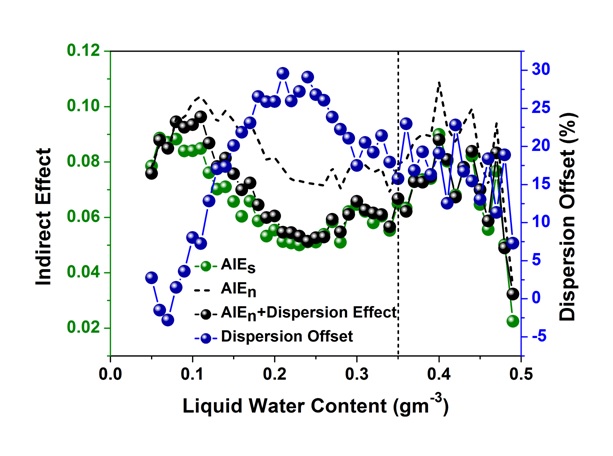 |
